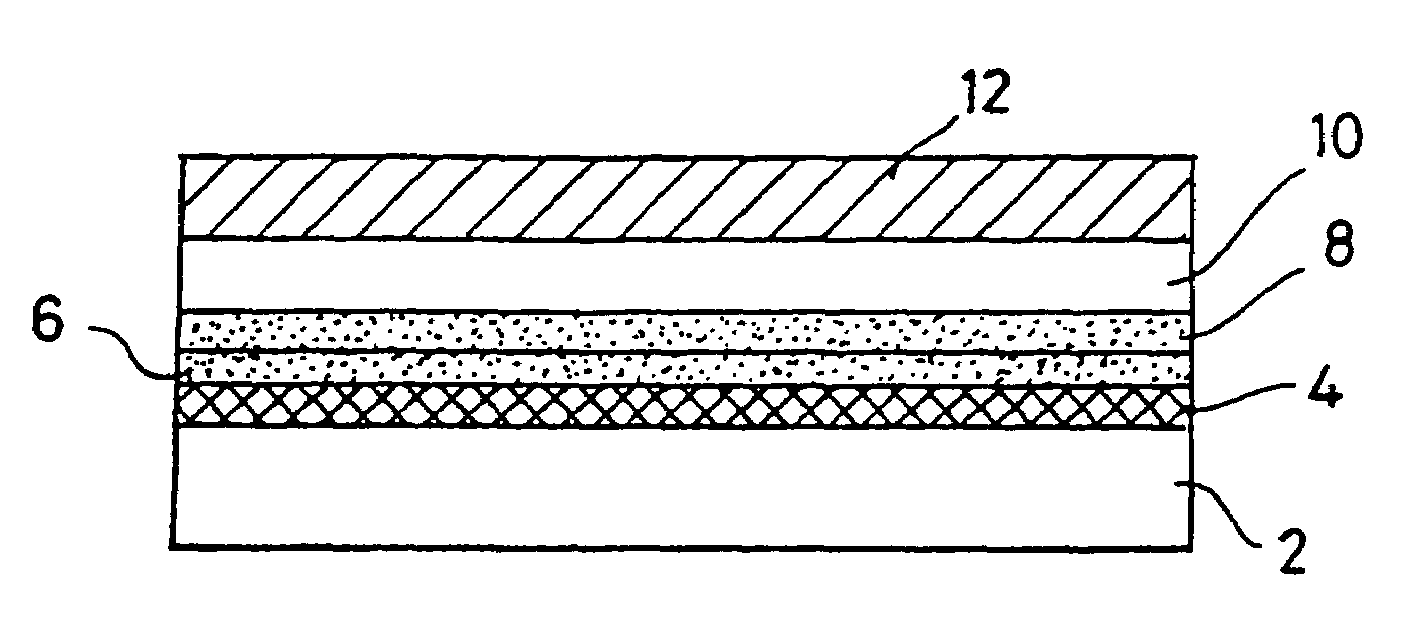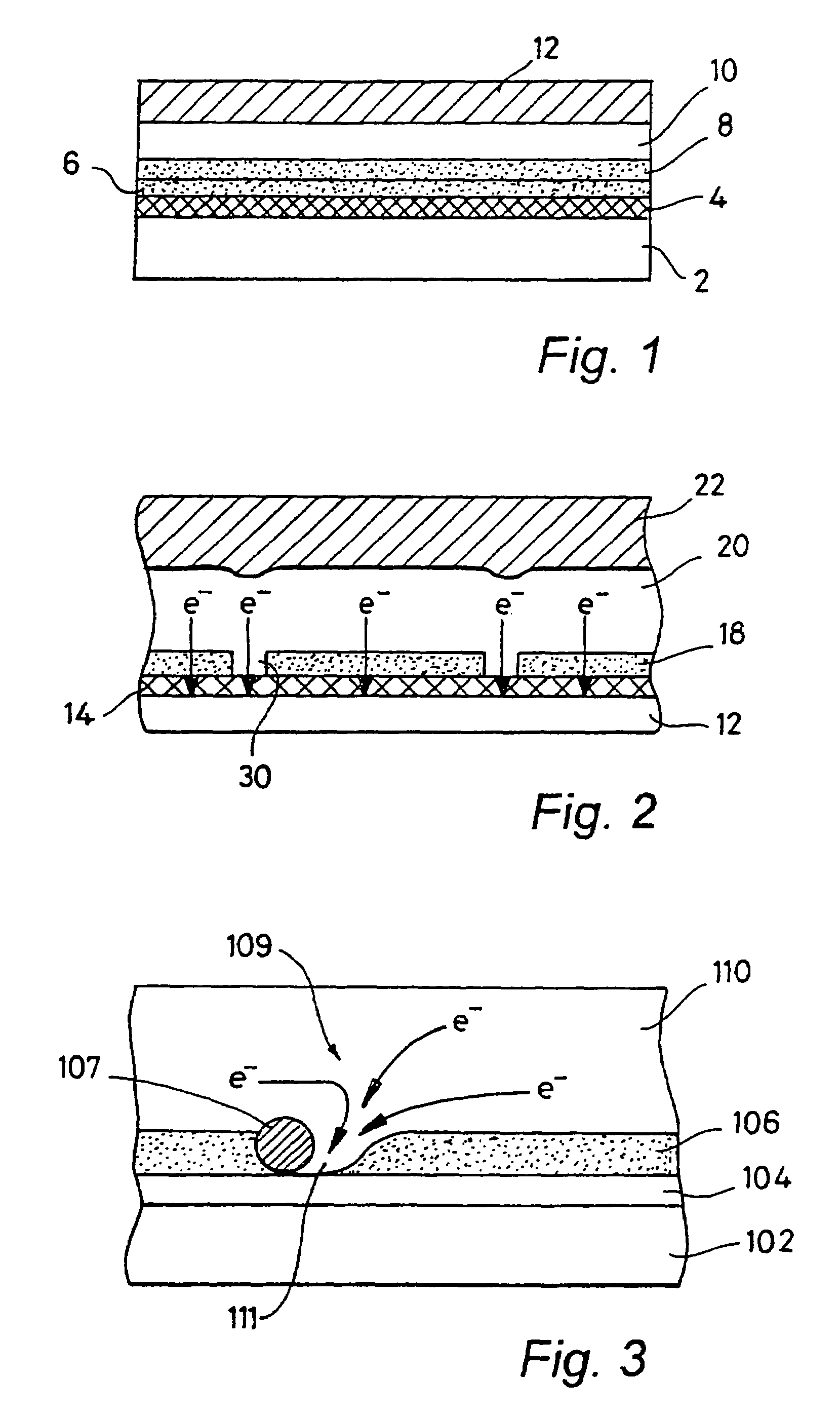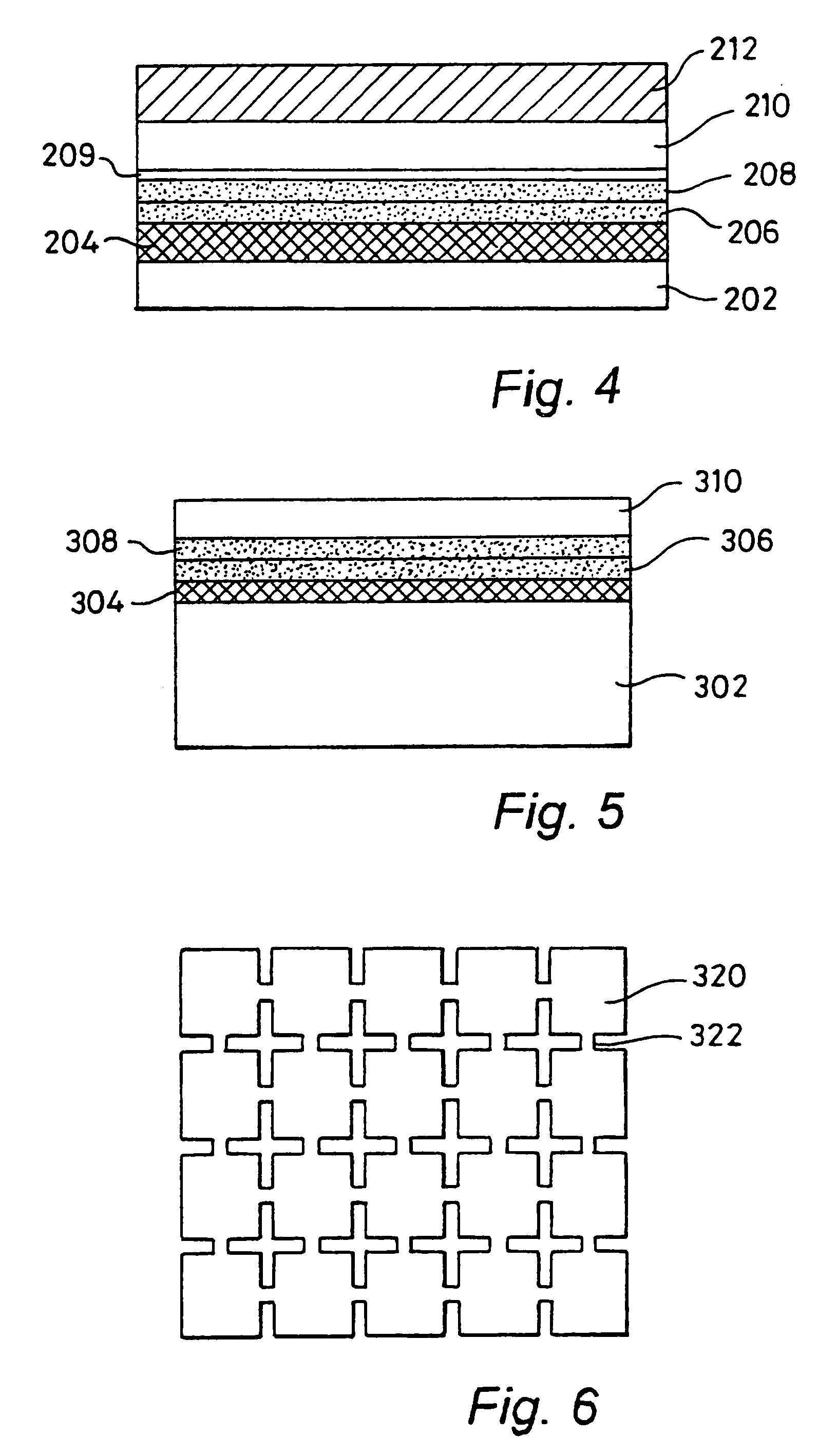Organic light-emitting devices
a light-emitting device and organic technology, applied in the direction of instruments, discharge tubes luminescnet screens, natural mineral layered products, etc., can solve the problems of irregular thickness of the resulting organic layer, defects formation of holes in the organic layer, so as to limit the current flow
- Summary
- Abstract
- Description
- Claims
- Application Information
AI Technical Summary
Benefits of technology
Problems solved by technology
Method used
Image
Examples
Embodiment Construction
[0070]FIG. 1 shows an OLED according to a first embodiment of the present invention.
[0071]A glass substrate 2 having a thickness of 1.1 mm is coated with a layer 4 of indium tin oxide (ITO) with a sheet resistance of 15 Ohms / sq. to a thickness of 150 nm. Although not shown in FIG. 1, this is patterned to form a series of parallel strips using, for example, standard photolithographic and etch processes. A layer 6 of polyethylenedioxythiophene doped with polystyrene sulphonic acid (PEDT:PSS) is spun on the anode layer 4 and subsequently baked at 150° C. to remove water leaving a layer of 50 nm thickness. A layer 8 of a light-emissive polymer such as a blend of 5% poly(2,7-(9,9,di-n-octylfluorene)-3,6-(benzothiadiazole) with 95% poly(2,7-(9,9-di-n-octylfluorene) (5BTF8) doped with poly(2,7-(9,9-di-n-octylfluorene)-(1,4-phenylene-((1,4-phenylene-((4-secbutylphenyl)imino)-1,4-phenylene)) (TFB) is then spun on to the layer 6 of PEDT:PSS to a thickness of 75 nm. A cathode layer 10 is then ...
PUM
| Property | Measurement | Unit |
|---|---|---|
| thickness | aaaaa | aaaaa |
| sizes | aaaaa | aaaaa |
| particle size | aaaaa | aaaaa |
Abstract
Description
Claims
Application Information
 Login to View More
Login to View More - R&D
- Intellectual Property
- Life Sciences
- Materials
- Tech Scout
- Unparalleled Data Quality
- Higher Quality Content
- 60% Fewer Hallucinations
Browse by: Latest US Patents, China's latest patents, Technical Efficacy Thesaurus, Application Domain, Technology Topic, Popular Technical Reports.
© 2025 PatSnap. All rights reserved.Legal|Privacy policy|Modern Slavery Act Transparency Statement|Sitemap|About US| Contact US: help@patsnap.com



